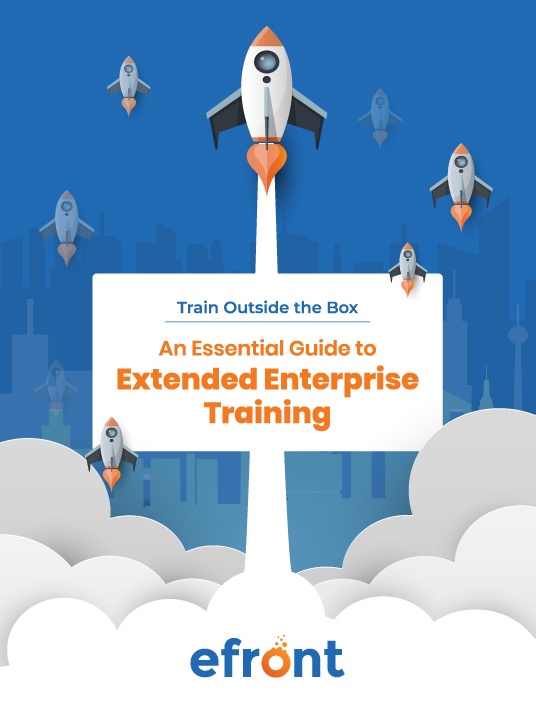Global Training Strategies That Will Help You Train Your Extended Enterprise
For some, training the extended enterprise is a relatively simple affair. Because your partners and customers are all in the same state or country. For others, with partners and customers scattered around the world, training becomes much more complicated.

Instead of following your normal learning strategy, you will need to establish a global training strategy. And we’re here to help with that.
Today, we’re presenting you with a 5-step plan to create effective global training strategies. What are global training strategies? They are long-term plans for training an international and dispersed extended workforce.
Global training strategies are essential. They help you prepare training for partners and customers across cultures and countries. Use the steps outlined here to identify, plan and put in place a training strategy to suit your organization's learning needs.
Step 1 - Align Your Goals
Like all significant initiatives in your organization, the place to begin a global training strategy is at the top. First, meet with company leaders and determine how training needs align with business goals. These leaders must understand that international training needs sensitivity to other cultures.
They are not responsible for the ins and outs of the actual project implementation. Instead, their role is to make sure that your international training aligns with business goals. Or, put another way, that your long-term training plan is adding value to your extended enterprise -consistently.
At the end of step 1, you should have a sentence that describes your plan in a nutshell. Below are 4 examples of global training strategies, recommended by Jennifer Lawrence of Cambridge Corporate Training [1].
- One set of content on one topic (to function across cultures and countries), deployed to the extended workforce in all regions.
- One set of content on multiple topics deployed to the extended workforce in all regions.
- One set of training goals for multiple types of content and topics deployed to the extended workforce in all regions.
- Multiple training goals, types of content, and topics deployed to the extended workforce in all regions.
Step 2 - Balance Goals With Training Needs
The next step to creating global training strategies is to think of your people. For a winning training program, you want to align your learning goals with the needs of your training audiences.
There is no point in delivering training that doesn’t address the unique needs of your audience. So, work with each region separately to find their needs, interests, and priorities. You'll also want to uncover regional performance gaps from the onset. And plan training objectives that will meet them.
As you consider the various training audiences in this step, you'll want to begin thinking about learning delivery. Will your channel partners in South Korea enjoy online training in the same way that your Australian partners will?
Keep in mind, and you'll return to this in another step.
Step 3 - Bring In The Right People
Now that you’ve established learning goals and audiences' needs, you are one step closer to figuring out your global training strategy. The next step is to find the people necessary to the project. People like Instructional Designers, Subject Matter Experts, and administrators.
It's a good idea to also find people who will be able to engage your international training audience. One of the best practices is to study the way past projects implemented on a global level were received. By looking at these previous initiatives, you will be better prepared to find the right people to lead your efforts and the right way to present them.
Be sure to put excellent systems of communication in place too now. When your extended workforce feels listened to, they are more likely to engage in the change.
Step 4 - Develop Content
You are now ready to develop international training. There are 3 main training strategies to keep in mind in this step:
1. Translation
If you have determined that you need to deliver your training in languages other than English, you will want to create content that is translator-friendly. Avoid complicated, jargony expressions like similes, metaphors, or idioms as these are tough to translate.
2. Localization
Localization refers to building content from a local perspective. Whether this is taking into account the culture of your training audience and adjusting the tone of your language, or examples you use in scenario-based training make sure you take cultural differences into account.
3. Learning Management System
It is at this stage you will also need to determine the Learning Management System you will use. For efficient international training, you'll want an LMS that supports different languages and has the power to create segmented and isolated training portals.
Step 5 - Launch!
In step 5, you’ll want to review your plan with leaders and resolve any niggling issues before launch. Training a global audience is a massive undertaking. So, first launch your international training to a sample audience. And then, once you get feedback and have course-corrected you can roll it out to the entire network.
After the launch, you'll want to keep evaluating your international training monthly. This way you can ensure that your training strategy is working in full swing.
For example, keep checking that the learning goals you identified in the first step are in alignment with business goals. Make sure that each region is happy and engaged with the content. And keep the lines of communication open. No-one will give you better ideas for improvement than the people on the ground.
Conclusion
Before embarking on training your extended workforce across countries, it’s essential you determine global training strategies. In effect, you want your training strategy to align business goals with training needs, as well as take cultural differences into account. With a plan in place, you’ll deliver excellent training to your partners and customers.
If you want to be an A-plus student:
Look at the examples of global training strategies in step 1, and identify the ones that suit your organization’s needs. Then, visit our website and discover how eFront is the best LMS for training your partners and customers.
References:








